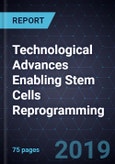Technologies Paving New Avenues to Drive Breakthrough Research Toward the Discovery of Next Generation Therapeutics
Since the advent of stem cells reprogramming after the discovery of the differentiation factors that allow the creation of human induced pluripotent stem cells, researchers all around the world are strongly committed to develop novel methods to design and build human stem cells.
Indeed, there is an increasing demand for the more efficient production systems and manufacturing methods of stem cells for potential investigation in disease management. This trend is emphatically envisaged to accelerate the development of both regenerative medicine and drug discovery and development.
Moreover, stem cell therapies are acclaimed as the next major advancements in transforming healthcare. Pharmaceutical companies are heavily investing in expanding their cellular therapy portfolio based on stem cells reprogramming, thereby exhibiting a strong evidence of the understanding future of stem cells reprogramming in the treatment of a broad spectrum of life-threatening diseases.








